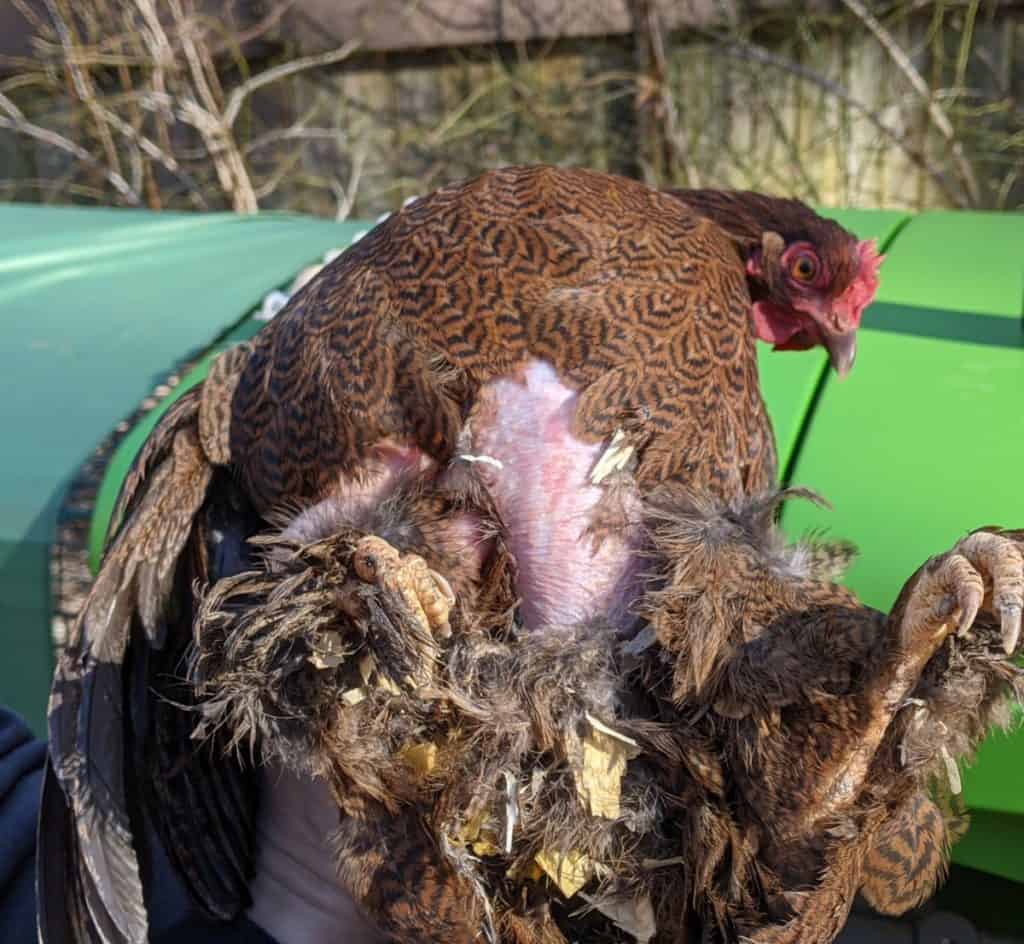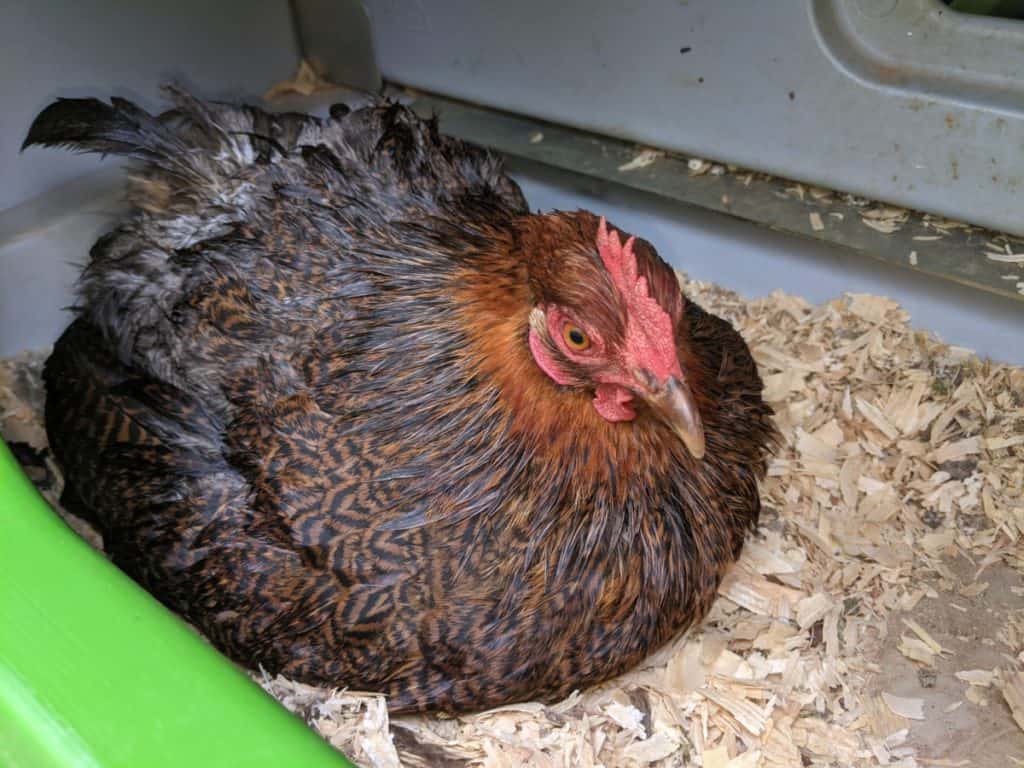When it comes to taking care of a broody hen, especially if you are doing it for your first time, it can seem tricky and stressful, but luckily, it doesn’t have to be. The only objective is to keep those eggs safe until they hatch so that you can welcome a new brood to your flock. So, what is the best way to care for a broody hen?
Caring for a broody hen can be done in two ways. Some owners let their hens set on the spot that the hen chooses for herself, and other owners prefer a broody pen to keep an eye on the hen and her eggs. The pen must have a thick litter for absorption, and she needs food and water at all times.
If you leave a broody hen to hatch her eggs in a coop, the chances are good that the other chickens will try to invade her space or take her spot when she gets up. The other chickens can trample on the eggs causing them to break, and you can’t be there to guard her nest all the time.
A broody pen allows the hen to be much calmer, and the eggs are protected from the rest of the flock.

How To Spot A Broody Hen
Before you think about building a broody pen, you need to have a broody hen. A broody hen is easy to spot as she will not go and roost with the flock in the evening. Instead, she will only leave her nest once or twice a day for replenishment and to relieve herself. After she is done, she will return to her nest and continue to incubate her eggs.
Brooding is a stressful time for a hen. Physically, it affects her bowel movements as she only gets up once a day, and they start to pull off their feathers from their belly and chest. So, if you see one of your hens with patchy feathers in that vicinity of their bodies, keep a close eye on them because you may be dealing with a broody hen.
Once you have spotted a broody hen, you must decide whether you want to leave her with the rest of the flock or consider moving her to a broody pen instead. If a hen is left to incubate eggs in a nest box with the rest of the flock, there is a chance she will spend too much time defending her eggs and not enough time tending to them, causing them to cool and die.
I have found this is because when one hen starts to go broody others start in as well and squabble over the clutch of eggs.
If you choose to move her, make the transition at night, or when your hen leaves the nest, otherwise you might get pecked, or you could end up with a discouraged hen refusing to continue incubating her eggs.
How To Prepare The Environment for a broody hen
Build A Broody Pen
First things first! Start by building or preparing a broody pen for your hen and her eggs. The pen size needs to be big enough for her to get up to relieve herself, away from where the eggs are.
The perfect broody pen size is 2 ft wide and 2 ½ ft long. This leaves her ample space to do what she needs to, without having to leave her eggs unattended.
The pen should be a comfortable space where she can feel at ease while she is brooding.
Install A Feeder And Water Dispenser
The water dispenser and feeder need to be situated in a secure, upright, secured position in the pen because the hen will be fluttering her wings often and could knock over the food and water. Replace the water with fresh, clean water every day.
Layer The Pen With Litter
The litter that you place at the bottom of the pen should be ultra-absorbent and thick enough to keep the heat inside the pen to absorb any liquids that may have spilled. You need to make a layer of +/-5 inches deep. I prefer using pine wood shavings which I find is the best bedding for chickens in general.
Find The Best Location For The Broody Pen
Finding the best location for the broody pen is very important. The correct lighting is crucial because your hen needs to be kept in a light/sleep pattern, making sure the pen is in a well-lit area. You could install soft artificial lighting or use natural lighting if the pen’s location receives enough light during the day.
Security
The broody pen needs to be predator-proof. Therefore, you need to ensure that the pen is completely enclosed. Not only will this protect them against predators, but it also shields them from environmental factors and harsh weather conditions.
Temperature
Place the broody pen in a temperate area. The temperature should never be below 55 Degrees Fahrenheit (12 Degrees Celsius). Attach a thermometer to the pen to make it easy for you to keep track of the temperature.

Helpful Tips To Care For Your Broody Hen
- Moving a broody hen to a different location can discourage a hen from continuing to brood. Move her to the new area in the evening and place dummy eggs in the nest. This will help you to determine whether or not you can set her on hatching eggs. If she does set on the dummy eggs, swap the eggs when she gets up or replace them one by one while she sets on them.
- A hen prefers an odd number of eggs to set on because it set more comfortably together than an even number of eggs.
- Periodically add electrolytes and probiotics to the hen’s water.
- Feed your hen with regular layer feed, but slowly start to switch to chick starter food. The hen will lose weight while incubating her eggs, and the chick starter food will add extra protein to her diet, helping her gain some weight.
- Add some dried bugs, whole oats, sunflower seeds, and scratch grains to her food now and then. This will give her the necessary nutrition that she needs to stay healthy while she is brooding.
- Nearing the end of the incubation process, start giving more chick starter feed to your hen. When the chicks hatch, mother hen can eat the same food as her chicks, and she will be perfectly fine.
- Lower the water and food to a level where the chicks have easy access to it. Make sure that the water is not a drowning hazard for the baby birds.
In Conclusion
Now you know that caring for a broody hen is quite simple. She needs food, clean water, comfortability, privacy, and protection. Nature is fantastic, and you will surely experience it when you have a broody hen for the first time.
A hen’s motherly instinct is so natural that she does not really need the help of a human. But when it comes to things that the hen cannot do for herself and her eggs, the best thing is to step in and assist her just enough for her to continue with her business without too much interference from you.
So, next time you have a broody hen, make sure to tick all of these necessities off your list!

